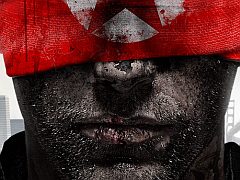Video Gamer is reader-supported. When you buy through links on our site, we may earn an affiliate commission. Prices subject to change. Learn more
It’s either a bold or foolish move to create a game in a genre oversaturated with AAA heavyweights, but Homefront has been trying to work its way into the market by promoting itself as an emotional event where the war has come to America. The game is written by John Milius, the man behind the ’80s paranoia classic Red Dawn, so already you can easily see the how deep the political themes stretch their fictional tendrils. Not only is this a game about a near-future America that has just been invaded by Korea; it’s written by someone who is renowned for a career making speculative fiction.
Some have already started calling its single-player campaign controversial, others are calling it jingoistic, but as you can imagine this narrative doesn’t entirely get forced through the single player pipeline and into multiplayer. Multiplayer takes place during the very early skirmishes of the invasion during which Korea has infiltrated what looks like middle-class America, however it still maintains a decidedly eerie tone as you fight through broken and burning suburban and rural areas.
On the first multiplayer map shown, Cul-de-Sac, we get a classic American sprawl of suburban houses that have seen better days. The map is tailor made for close-combat shooting – the actual size of the neighbourhood, while varied in what it offers for you to explore and use for cover, feels relatively small when you’re with swarms of players running amok. With a 24-player Team Deathmatch the area is a legitimate suburban warzone. What you get is an American shanty town: an unused playground, driveways littered with refuse, discarded sofas, broken fences. These are the corridors of the game that feed the expansive streets into particular choke points.
In its 32-player Ground Control mode, a standard King of the Hill game type that gives you three areas spread across the map to be captured, you’ve moved from the centre of a small-town neighbourhood to a broader hill and tree riddled parkland area where the options for cover are fewer and further between. Once you have captured a point your team’s score will begin to rise and the more points you capture, the higher the rate of scoring will be. When a score limit is reached on the captured point the three control points move to a different area on the map; Kaos’ attempt to keep the battlefield as dynamic as possible.
But looking past what are essentially standard multiplayer modes, the feature the studio is happiest to boast about is the newfangled Battle Points system. This is a form of in-game currency that you earn in the same way you would earn XP in other games, by capturing bases, taking out other players, drones, or getting headshots. So while Homefront still has a Ranking and XP system, Battle Points are different in that you take those same points and trade them in for upgrades.
The result is an additional way of strategising in the battlefield based on whether or not to spend or save your points. They can be used to buy drones, tanks, jeeps, airstrikes, even attack helicopters, each being billed with a different price tag. But there’s another question of what’s actually worthwhile. In Homefront’s economy capturing a base is worth 250 points whereas some of the more expensive vehicles are priced around the 1400 point mark. Naturally that means you need to weigh up whether it’s worth saving for fewer but bigger purchases. Each match can be completely different depending on what is bought using Battle Points, meaning it’s legitimately interesting to see how the game evolves from being a simple assault-rifle based shooter on the ground to one fought with tanks, then helicopters, then gunships.
Unfortunately there aren’t any Engineer classes in the game to repair these vehicles you’ve spent your time saving up for, but they have a longer lifespan than what you might be used to. Most vehicles have specific defensive capabilities. For instance helicopters have flares that can help them avoid incoming homing missiles, and tanks have an additional layer of armour. Once one side is stripped the driver can try to keep it facing away from combat.
Red Dawn-isms linger in other games. The idea of small-town America being at the centre of an invasion might have already been echoed in Modern Warfare 2’s US Invasion to name one. But Kaos brings an impressive amount of dedication to the idea. It will take time to see whether this BP system is enough to tempt people away from the reliable handful of heavyweight titles and toward this new IP, but it offers a surprising amount of variation to the matches. Unfortunately, regardless of whether or not THQ says it isn’t competing with the likes of Call of Duty, in a genre as saturated as this you’re competing with the big boys whether you intend to or not.

/https://oimg.videogamer.com/images/a1ea/homefront_27.jpg)